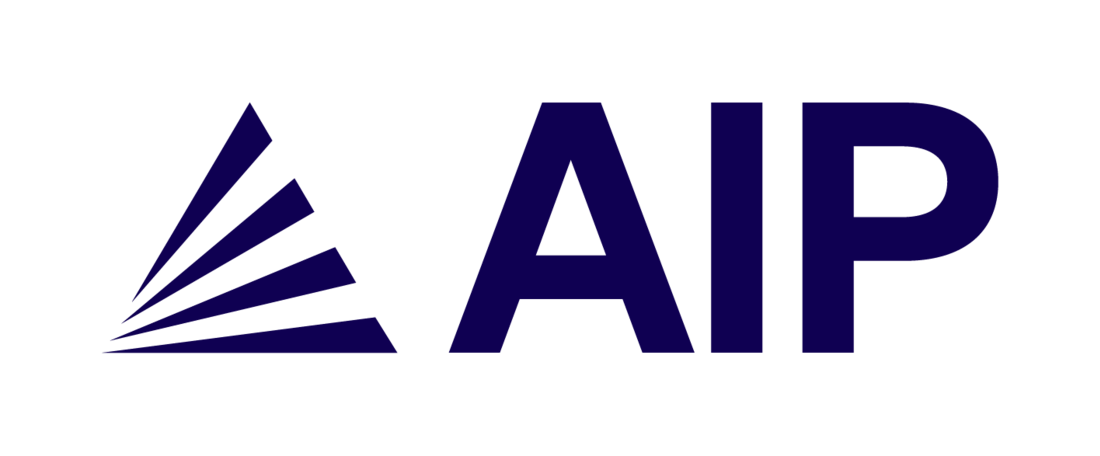Top Qs
Timeline
Chat
Perspective
American Institute of Physics
American non-profit organization From Wikipedia, the free encyclopedia
Remove ads
The American Institute of Physics (AIP) promotes science and the profession of physics, publishes physics journals, and produces publications for scientific and engineering societies. The AIP is made up of various member societies. Its corporate headquarters are at the American Center for Physics in College Park, Maryland, but the institute also has offices in Melville, New York, and Beijing.[1]
This article needs additional citations for verification. (May 2022) |
Remove ads
Historical overview
The AIP was founded in 1931 as a response to lack of funding for the sciences during the Great Depression.[3] The AIP was founded in 1931 at a joint meeting between four physics societies: the American Physical Society, the Optical Society of America, the Acoustical Society of America, and the Society of Rheology. These were soon joined by the American Association of Physics Teachers, for a total of five societies.[4] It formally incorporated in 1932 consisting of five original "member societies", and a total of four thousand members. As soon as the AIP was established it began publishing scientific journals.[5] By 1943, the AIP published eight journals: Physical Review, Reviews of Modern Physics, Journal of the Optical Society of America, Journal of the Acoustical Society of America, American Journal of Physics, Review of Scientific Instruments, Journal of Applied Physics, and Journal of Chemical Physics.[4]
A new set of member societies was added beginning in the mid-1960s.[5]
The organization restructured in 2013, creating a new subsidiary, AIP Publishing LLC, to manage physical publications of its journals with a smaller board.[6]
Remove ads
Member societies

Affiliated societies
- American Association for the Advancement of Science, Section on Physics
- American Chemical Society, Division of Physical Chemistry
- American Institute of Aeronautics and Astronautics
- American Nuclear Society
- American Society of Civil Engineers
- ASM International
- Astronomical Society of the Pacific
- Biomedical Engineering Society
- Council on Undergraduate Research, Physics & Astronomy Division
- Electrochemical Society
- Geological Society of America
- IEEE Nuclear and Plasma Sciences Society
- International Association of Mathematical Physics
- International Union of Crystallography
- International Centre for Diffraction Data
- Health Physics Society
- Laser Institute of America
- Materials Research Society
- Microscopy Society of America
- National Society of Black Physicists
- Open Access Scholarly Publishers Association
- Polymer Processing Society
- Society for Applied Spectroscopy
- Society of Physics Students
- SPIE
List of publications
The AIP has a subsidiary called AIP Publishing (wholly owned non-profit) dedicated to scholarly publishing by the AIP and its member societies, as well on behalf of other partners.[7]
- AIP Advances
- AIP Conference Proceedings
- APL Bioengineering
- APL Materials
- APL Photonics
- Applied Physics Letters
- Applied Physics Reviews
- Biomicrofluidics
- Biophysics Reviews
- Chemical Physics Reviews
- History of Physics Newsletter
- Journal of Applied Physics
- The Journal of Chemical Physics
- Journal of Mathematical Physics
- Journal of Renewable and Sustainable Energy
- Journal of Physical and Chemical Reference Data
- Journal of Vacuum Science and Technology
- Chaos
- Low Temperature Physics
- Physics of Fluids
- Physics of Plasmas
- Physics Today
- Review of Scientific Instruments
- Scilight
Remove ads
AIP style
AIP created a manual of style first introduced in 1951, called AIP style, which also includes the AIP citation format.[8] It is the most commonly used style and citation format in physics publications.[9][10][11]
See also
References
External links
Wikiwand - on
Seamless Wikipedia browsing. On steroids.
Remove ads

